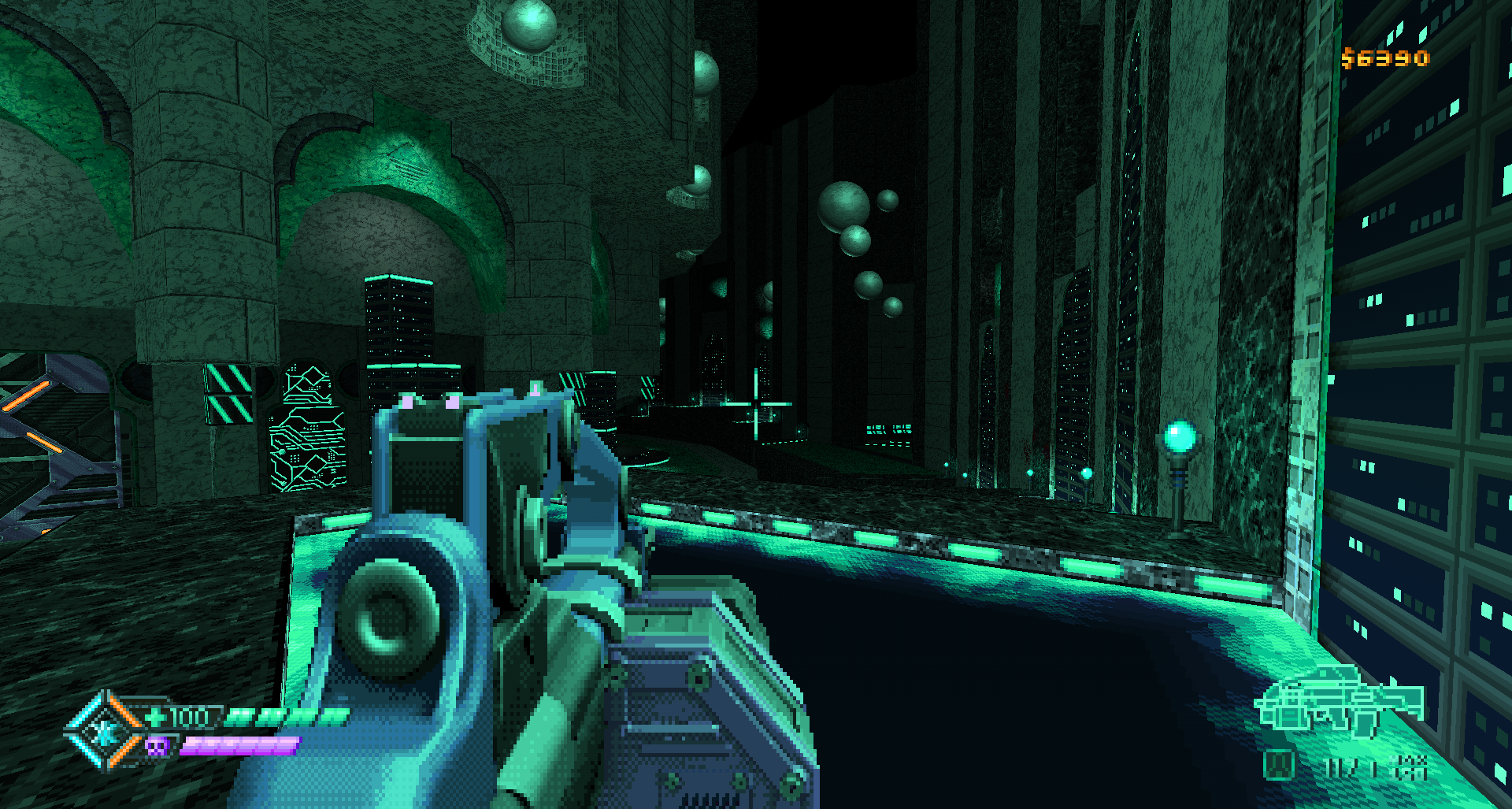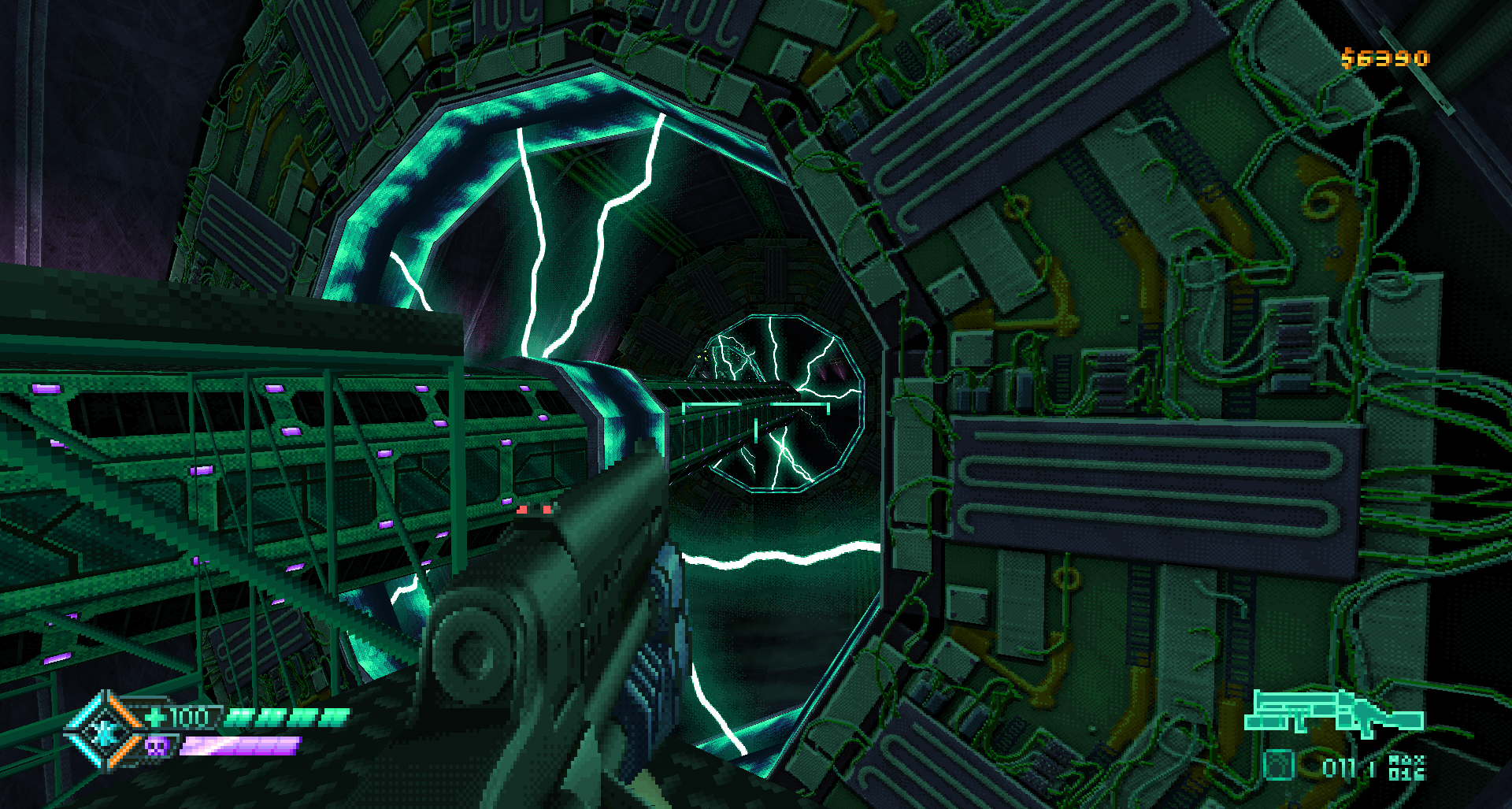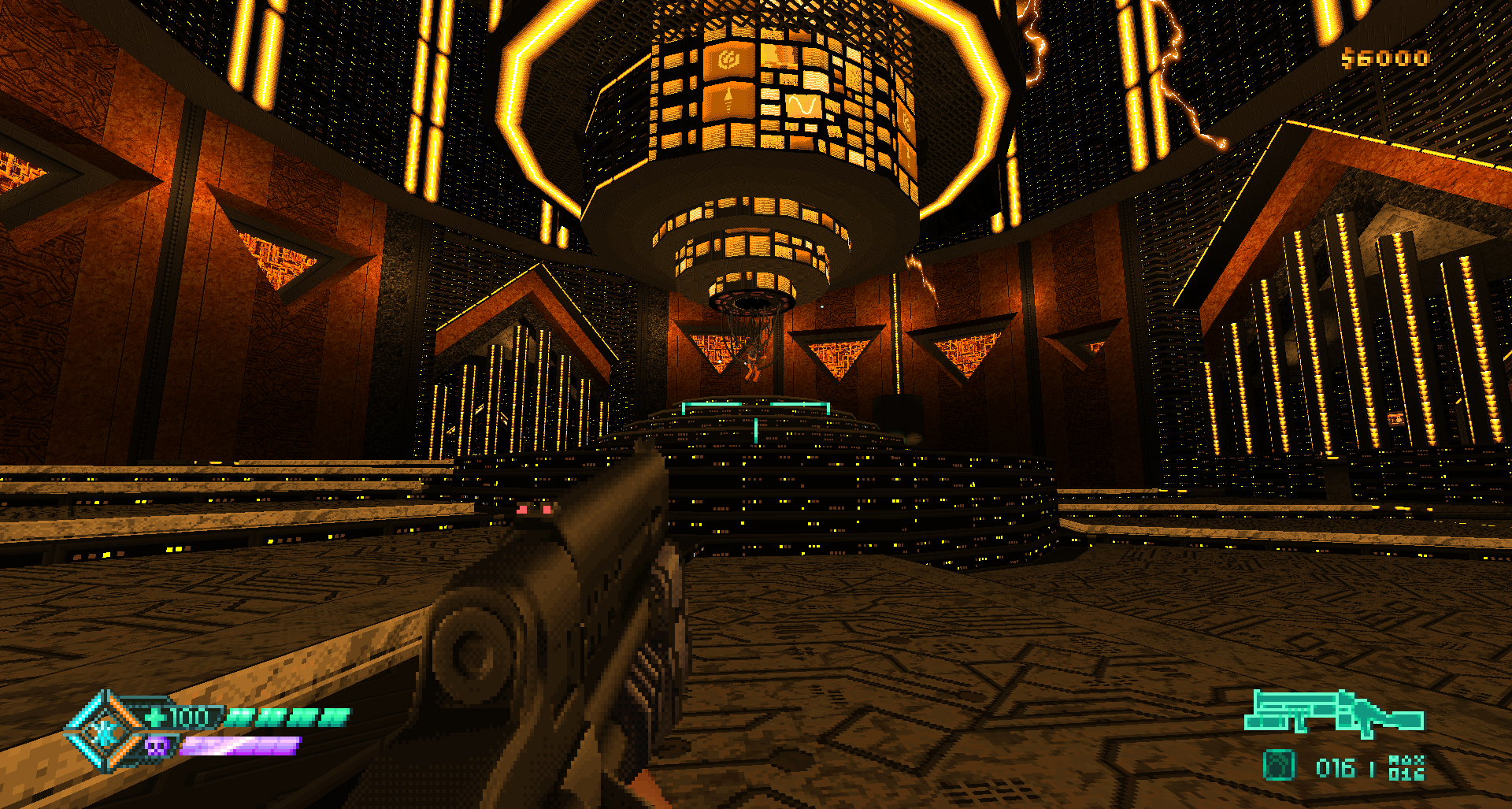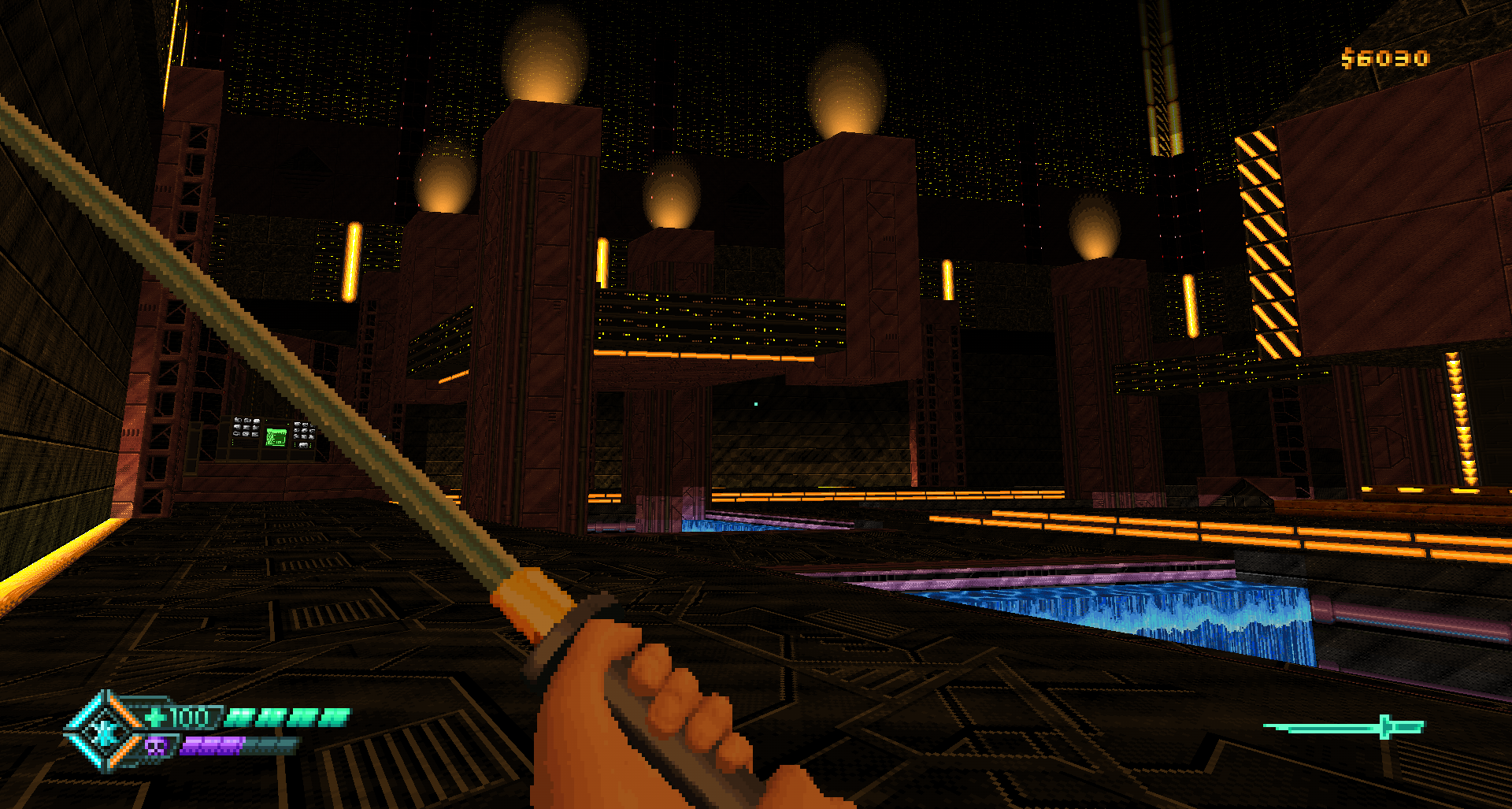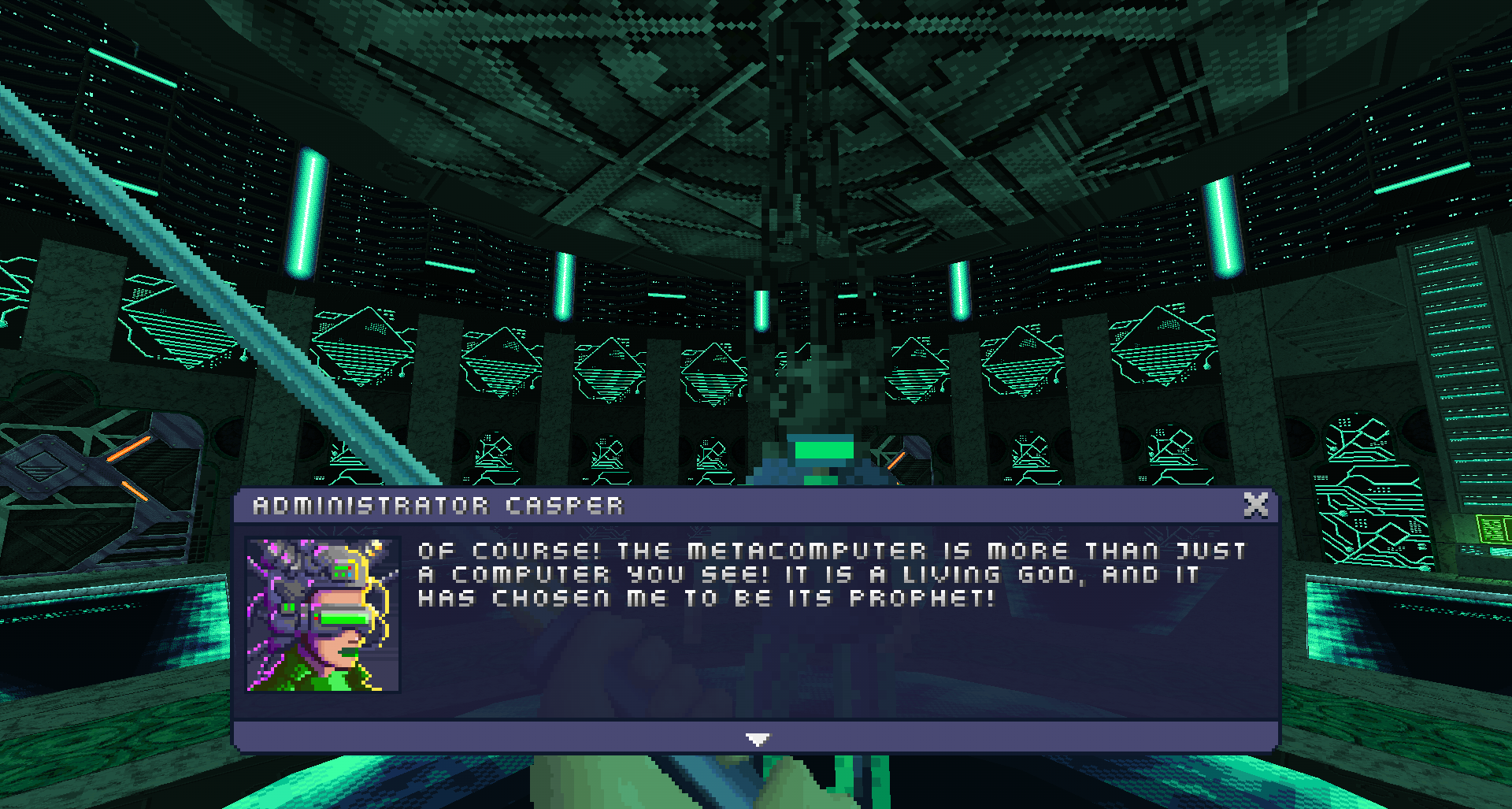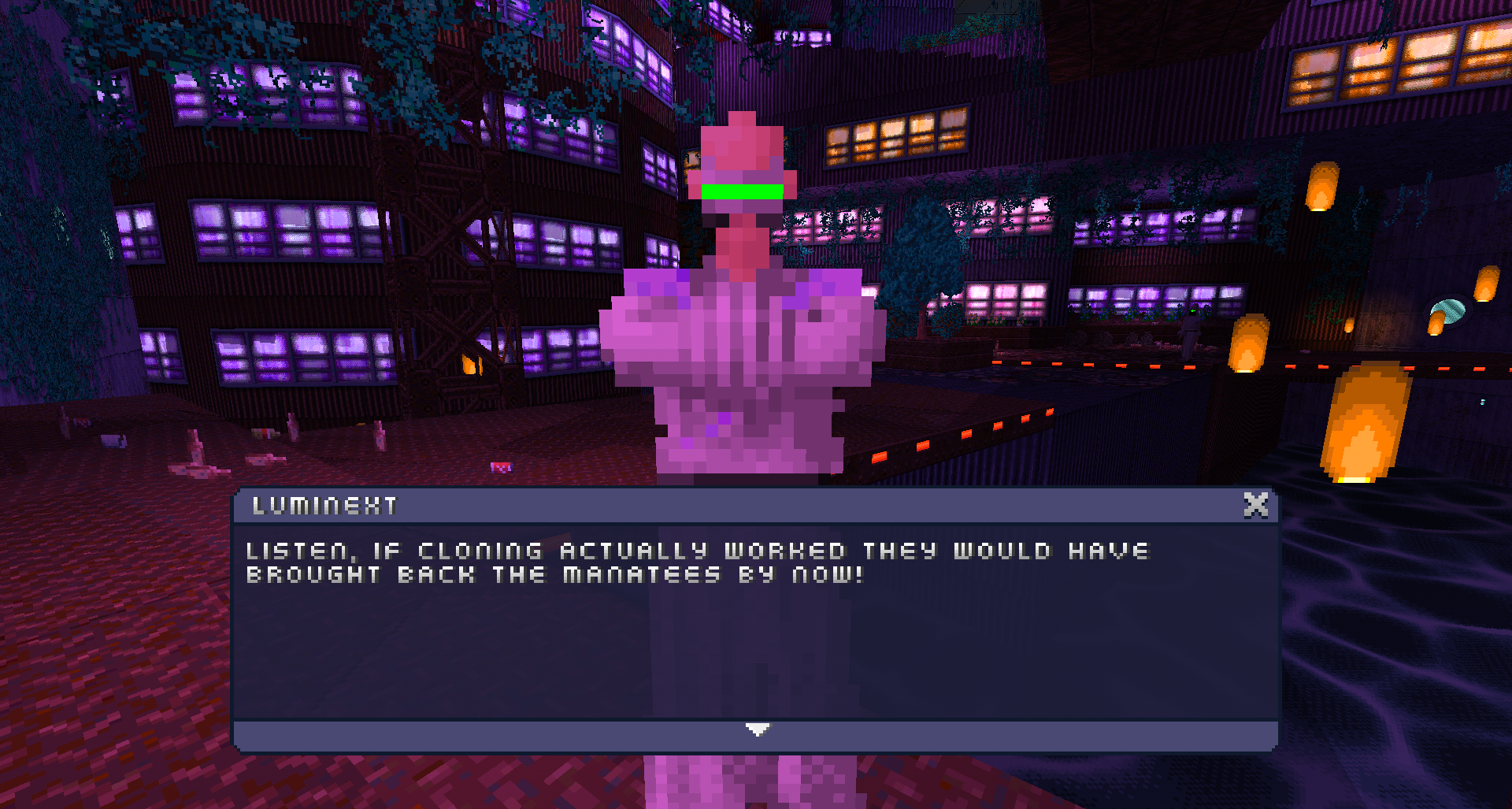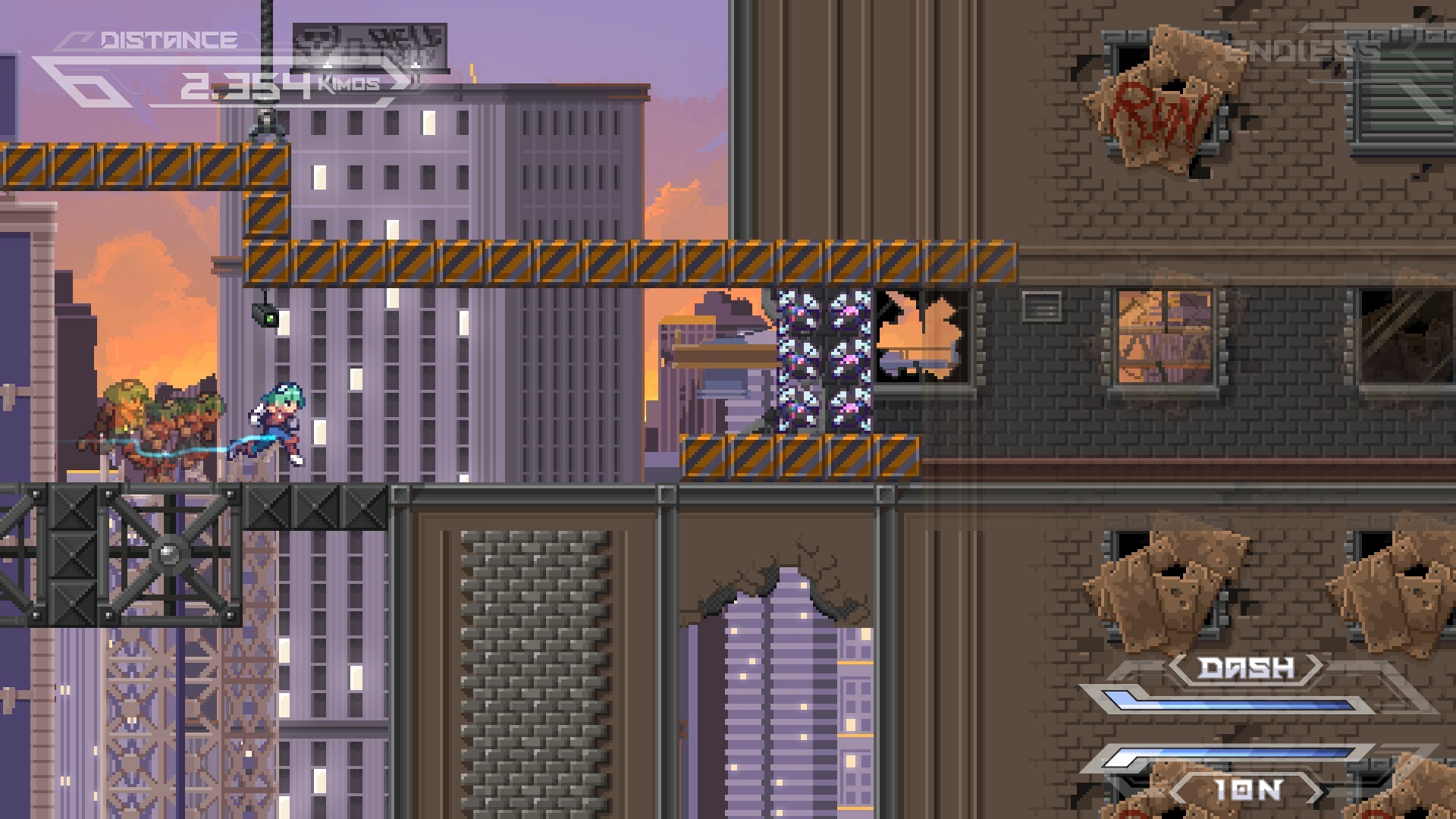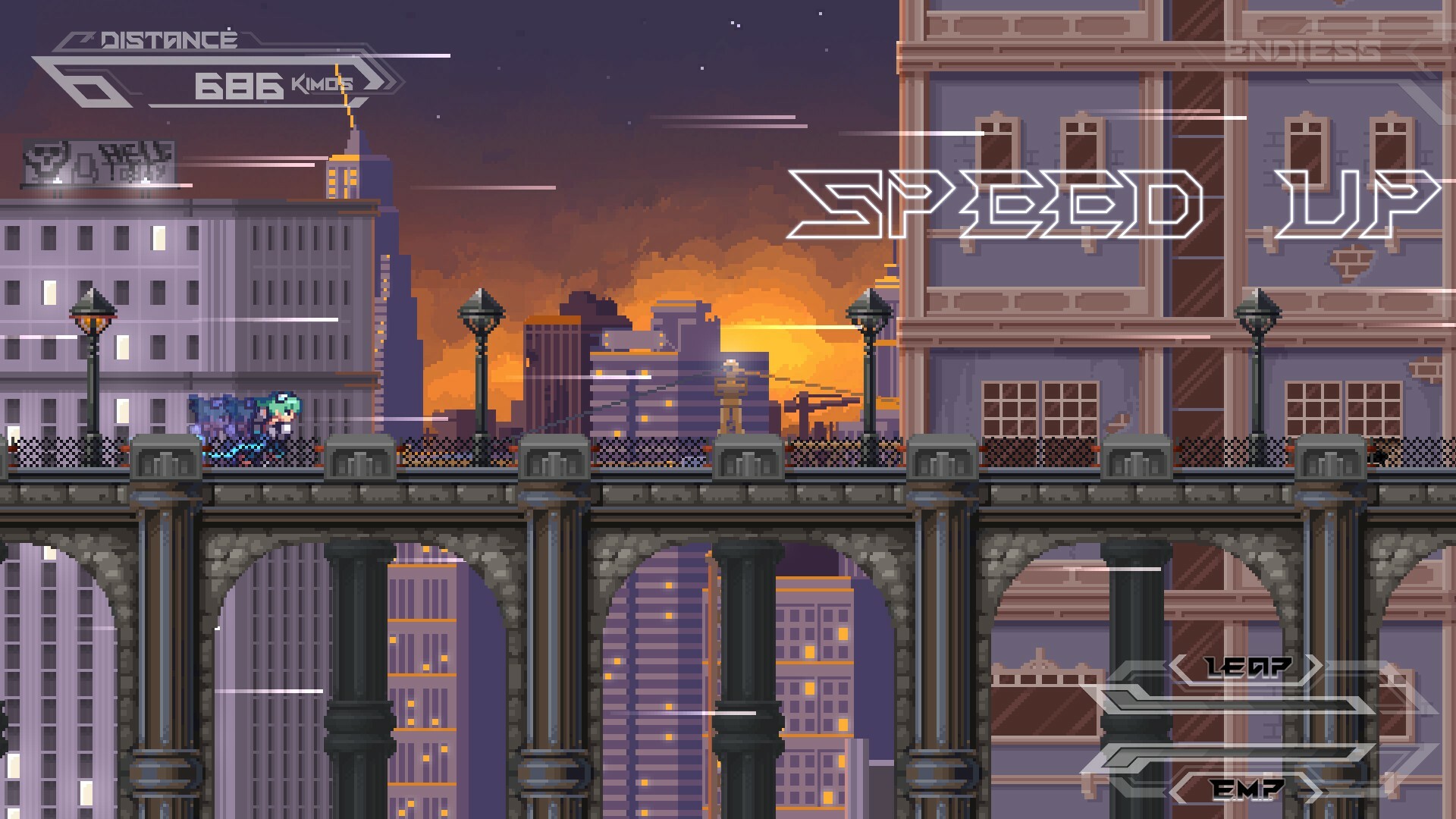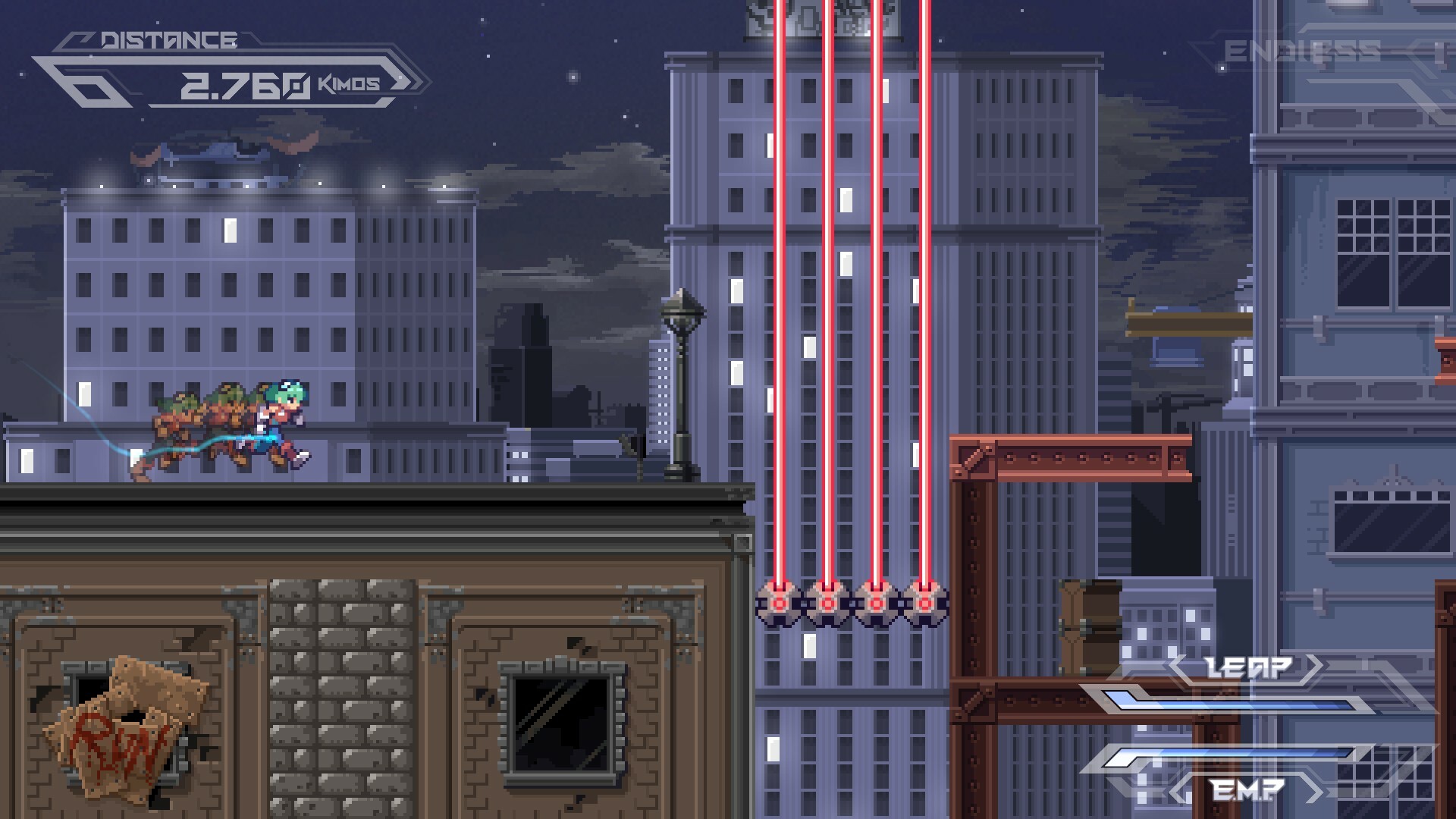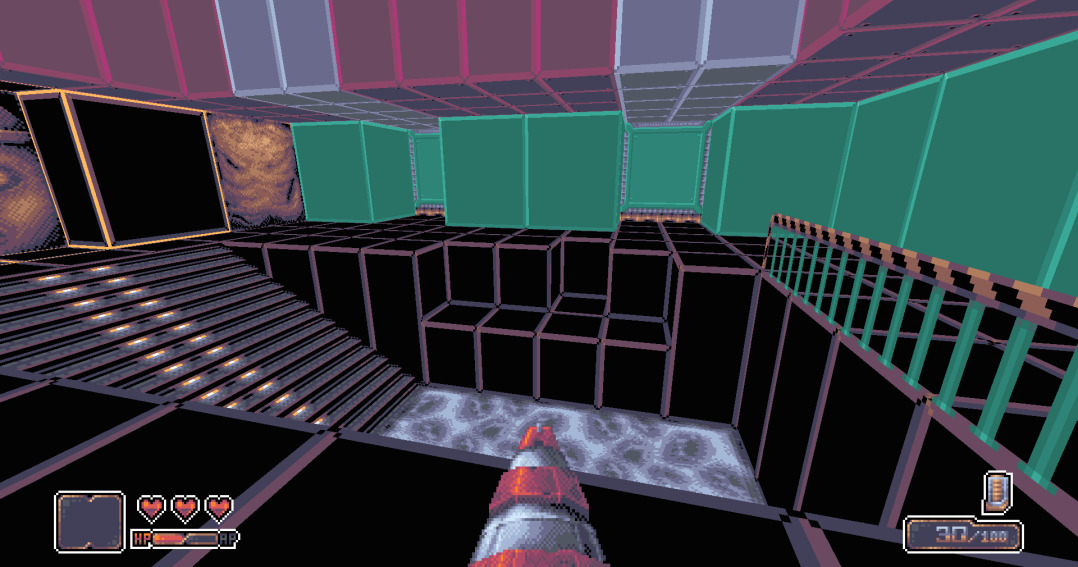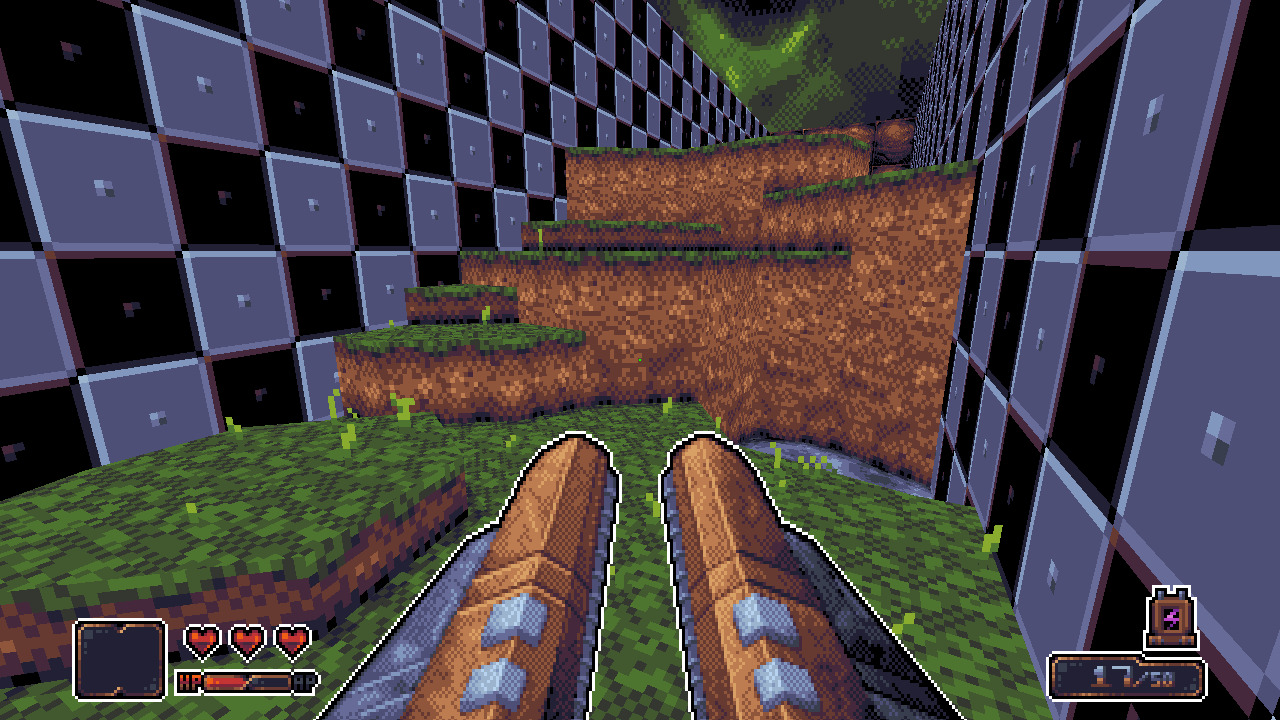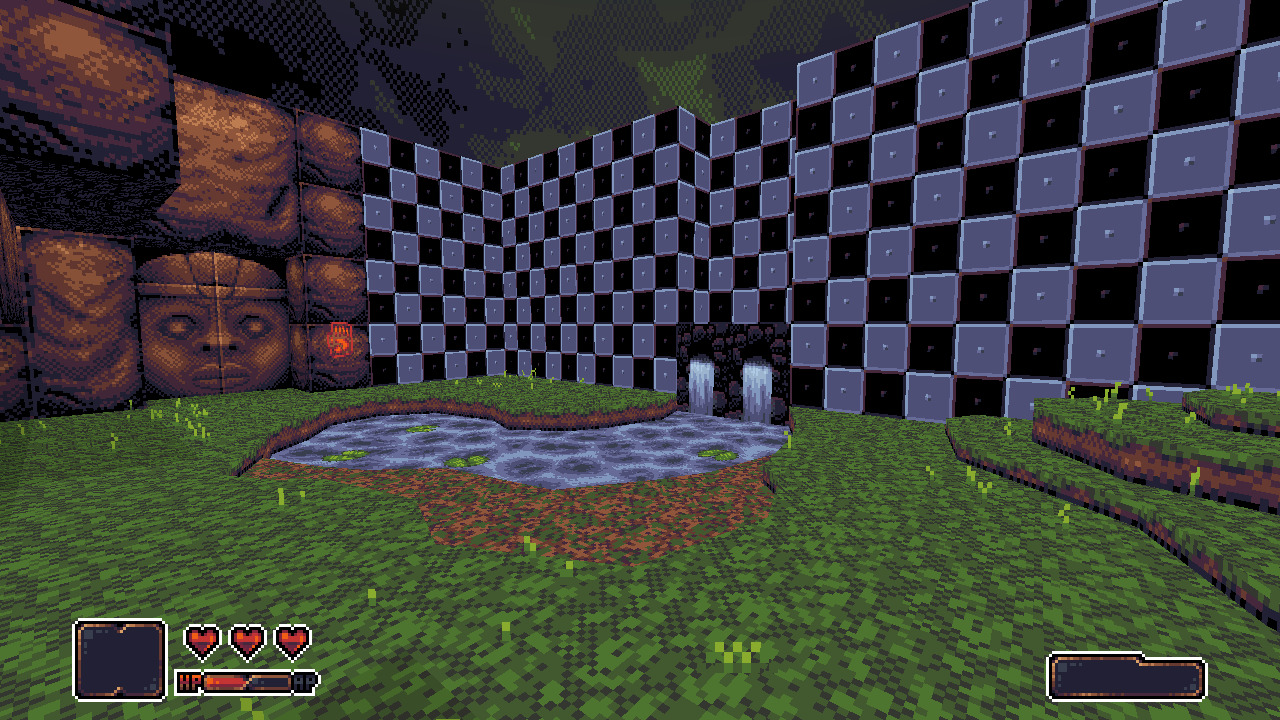Beyond Sunset - Metacorp/Vaporware
Beyond Sunset is a first person shooter set in an alternate future where quantum computing was invented and made viable in the 70s. You play as the cyborg street samurai Lucy as she tries to work her way up the ranks of the Luminext and find out who she really is.
My responsibilities on this project include a bit of everything, from system and AI design to animation and asset creation to level design, arena design, and event scripting. Roughly half of the level design in Beyond Sunset was done by myself, with many areas of the game additionally being collaborative work. I am especially proud of the work I have done for chapter 2, which I feel is some of the most striking work I have done to date. Beyond that I developed the elemental augment system, the player's movement-based attacks, the system that handles the resource economy of the combat loop were all developed, various presentational enhancements for the enemies in the game, created scripts to automate complicated or frequently used elements of level design, and I have done significant dialogue and quest design throughout all chapters of the game.
Chapter 2 takes place in a building styled after the sorts of marble ground floors you see in some office buildings built in the 80s. To keep the areas distinct and memorable, each wing of the building is themed around a different color, shape motif, and general architectural inspiration. This area is meant to evoke a mosque or cathedral-like feeling and was constructed with vaulted ceilings and arches framing much of the spaces.
This section in chapter 2 takes place inside of a particle accelerator tunnel, or a space evocative of one at any rate and is the only place in the game where we employ the use of low gravity. Enemy movement is not physics driven, instead being more "cinematic" so that enemies leaping visually resembles kung fu movies where the actors are being moved through the air on wires but player movement is effected in a way that makes the encounters memorable even though the space is geometrically simple.
The Administrator's chambers in chapter 3 were all designed so that each chamber could be reused for different stages of different quests depending on which quests players decided to take. As such they needed to be places that framed the Administrators in the middle prominently while also being spaces where a combat arena could occur as well as a boss fight.
This placed some restrictions on the design of these spaces that required us to develop a system handle level geometry transforms in a much more robust way than the engine supports out of the box. The team ended up making a state machine, as well as scripts to run in editor to automate state generation, which allowed us to easily automate complicated transformations of these chambers as needed and proved very useful in many other areas of the game where multiple quests interacted with the same areas in unique ways depending on the active quests and on quest progress.
This arena is one of the first arenas I redesigned after completion of the behavior tree-based arena system and it incorporates multi-stage encounters as the encounter space is changed by the previously mentioned level transform system to encourage player flow through the area. Essentially the player does something in this space, and then leaves, but through use of the arena manager and level transform system we can present the space and the intended flow through the space in a way that doesn't halt the feeling of progression that backtracking would.
Writing the dialogue for casper was very enjoyable, she has a very... interesting relationship with her work.
The dialogue for the various archive bots in chapter 2, as well as the cultists in chapter 3 is limited to only a line or two apiece as the NPCs are generally preoccupied with their work and do not have much time to talk to the player. This limited dialogue presented an opportunity for some world building that implied a larger world than the player is able to directly perceive during the game which helps to make the setting feel larger and more lived in. Characters with more dialogue tend to have more plot relevant things to say and so we don't have a chance to drop hints about the bigger picture in the same way with those characters.
There are a few more things I would like to put in this section and some design decisions I'd love to elaborate on after the final chapter of the game is released. Until then I'll just say that the thing I have found particularly fulfilling about the development of Beyond Sunset has been hearing people pick up on changes that I have implemented as a result of QA feedback. It affirms the choices made in the design process and is generally just nice to see people making note of things that were a sticking point in internal testing which no longer trip players up. We've made some significant changes to the combat system since the game's demo was released as well as a myriad of other smaller changes throughout development and it has been very interesting seeing people react positively to those changes. I've especially liked when players have had positive reactions to character dialogue that I've written as that's a part of the game that I most see people skipping out on so they can get back to the combat.
"It's interesting to see subtle changes make huge differences... It's all very tight in terms of it's mechanics, clearly polished and workshopped over and over... No more shoot at it until it dies, you have to learn his patterns and pick up on the subtle audio queues that mean double-jump or slide."
Civvie 11 - ROUNDUP 4 - THE ALLUVION
“Looks really nice!”
John Romero
Run or Die - Team Flow
Run or Die is an endless runner where the player must traverse a ruined cityscape by using several abilities, including a large ion cannon, to clear a path.
My responsibilities for this project included asset creation and QA. I created the tile set used for the level geometry and parts of the background.
The Adventres of Square - BigBrik Games
I did some work on the weapon sprites in the very early stages of development before BigBrik was founded. Since that time almost all of those sprites have been touched up in some way as the project has progressed.
Combat Train - unfinished
Combat Train is an unfinished solo project I started while in college. Work on the project was suspended after college and resumed briefly during covid lockdown before being indefinitely suspended after I was hired to work on Beyond Sunset.
This was the final iteration of the project before I started work with Vaporware and is one of the few screenshots showing off some of the constraints I'd decided to impose on level design so that I could evoke the feeling of a pre-Doom FPS. I made a fairly detailed design doc/style guide going over this sort of level design and what I could/couldn't be done with it, some of which served as a style guide for the cyberspace sections of Beyond sunset.
This mostly shows off the grass spawner but it also displays a very subtly ambient occlusion where the sides of the dirt meets the grass. This AO differs from the softer AO that is typically seen in modern games in that it matches the level of detail allowed by the geometry and allows for a much more subtle and aesthetically cohesive feel while still making the edges of objects feel more defined.
BunLord - unfinished
BunLord started as a mockup for an assignment in class and developed from there largely as an experiment to see how far I could push the EGA/CGA color palette. This only ever got as far as a few mockups with camera movement and basic physics before other projects took priority.
